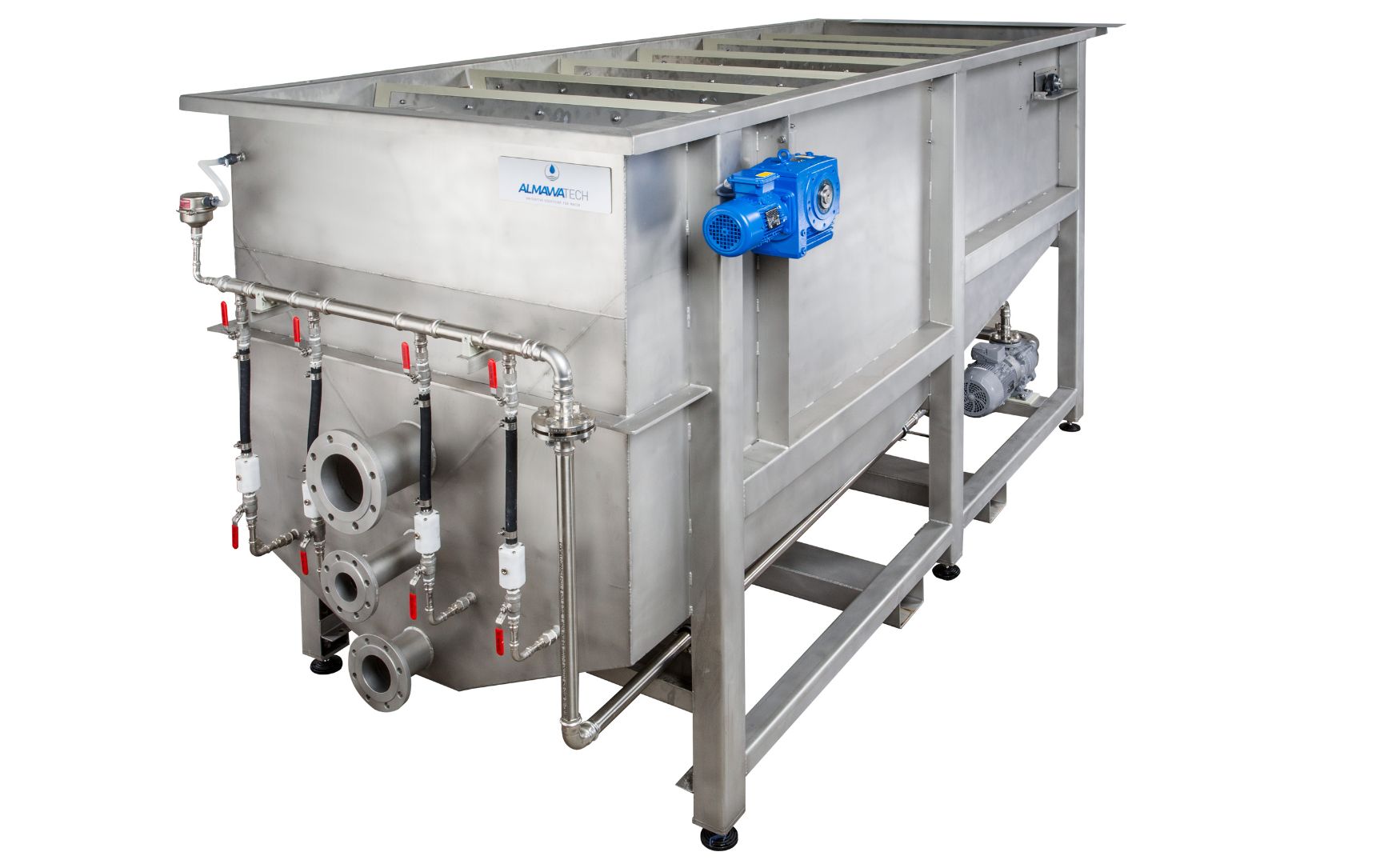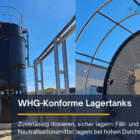Light liquids are water-insoluble substances with a lower density than water and include substances such as mineral oils, petrol, diesel and other hydrocarbon compounds. They are often produced in industrial processes, in road traffic or during the storage and processing of oil products. Light liquids pose a significant challenge in industrial water and wastewater treatment, as they not only pose a risk to the environment, but can also impair the functionality of water treatment plants.
This article provides a comprehensive overview of the definition, physico-chemical properties of light liquids, their impact on water treatment and the technologies for effective removal from water and wastewater streams.
Table of contents
Definition and properties of light liquids
Leichtflüssigkeiten sind organische Flüssigkeiten, die eine geringere Dichte als Wasser aufweisen (meist < 1 g/cm³). Aufgrund ihrer hydrophoben Eigenschaften mischen sie sich nicht mit Wasser und bilden auf dessen Oberfläche eine Trennschicht.
Typical examples of light liquids:
- Mineral oils: Lubricating oils, engine oils.
- Fuels: gasoline, diesel, kerosene.
- Hydraulic oils: Used in industrial machinery and vehicles.
Physical-chemical properties:
- Density: Between 0.7 and 0.95 g/cm³, depending on the composition.
- Viscosity: Varies greatly; lubricating oils are more viscous than fuels.
- Hydrophobic: They are not soluble in water, but attach themselves to organic materials or microplastics.
- Volatility: Many light liquids such as gasoline have a high volatility, which means that they can also be released in gaseous form.
Origin and occurrence of light liquids in wastewater
Light liquids enter water or wastewater systems in various ways:
1. industrial processes:
- Manufacturing companies and workshops: Through the use of lubricating and cutting oils.
- Petrochemical industry: Wastewater from refineries often contains high quantities of hydrocarbons.
2. transportation and traffic:
- Road runoff water: Due to oil spills from vehicles and leaks on road surfaces.
- Petrol stations: Drip losses and overflow events lead to contamination of rainwater.
3. storage and accidents:
- Oil storage sites: Leaks from storage tanks or pipelines.
- Accidents: Oil spills after tanker accidents or burst pipes.
Effects of light liquids
1. environmental impact:
- Light liquids float on water surfaces and form barriers that hinder the exchange of oxygen with the atmosphere. This leads to a lack of oxygen in bodies of water and damages aquatic ecosystems.
- Many light liquids are toxic and pollute the flora and fauna in contaminated areas.
2. operational problems in water treatment plants:
- Fouling: Deposits of oils and greases on membranes or in pipes.
- Loss of efficiency: Filters and separators clog more quickly, which increases operating costs.
- Corrosion: Certain hydrocarbons can trigger chemical reactions that damage materials.
Technologies for the removal of light liquids
The treatment of wastewater containing light liquids requires special technologies to ensure effective separation and disposal.
1. mechanical processes
Oil separators:
Oil separators are proven systems for separating light liquids based on the difference in density between water and oil.- Gravity separator: The water flows slowly through a chamber so that the oils rise to the surface and can be skimmed off.
- Coalescence separator: By using coalescence elements (fine structures), small oil droplets are brought together to form larger droplets that can be separated more easily.
- DIN 1999-100: Standard for light liquid separators, which is used particularly in filling stations and workshops.
Lamella clarifiers:
These systems use inclined plates that slow down the flow of water and help to separate light liquids.
2. membrane technologies
Ultrafiltration (UF):
Hydrophobic membranes can efficiently retain light liquids and enable almost complete removal of oil particles.
3. chemical processes
CP systems:
Oil droplets are bound with special precipitants and flocculants and sediment as sludge. This technology is particularly effective with high concentrations of light liquids.Adsorption:
Activated carbon or other adsorptive materials bind hydrocarbons and purify the water.

Photo: Our CP system ALMA CHEM MCW with downstream activated carbon filter, for the removal of light liquids, AOX, COD, heavy metals and cyanide
4. flotation: a proven technology for removing light liquids
Flotation is a highly effective process for removing light liquids from water and wastewater streams. It uses the principle of density differences and the adhesion of particles or liquid droplets to gas bubbles to enable the separation of unwanted substances. This process is used in various configurations and offers high efficiency, particularly in the treatment of wastewater containing emulsified or finely dispersed light liquids.
Basic principle of flotation
Flotation is based on the injection of fine gas bubbles into the wastewater. These bubbles attach themselves to the particles or oil droplets and reduce their density so that they can rise to the surface. The floating impurities are then removed using special scraper systems.
Dissolved air flotation (DAF)
In dissolved air flotation, air is dissolved into the water under pressure. When the pressure is released, microscopically small air bubbles are created which attach themselves to oil droplets and solids.
Advantages:
- Removes the finest oil droplets and emulsified light liquids.
- Very effective for high wastewater loads.
- Suitable for large flow rates.
Areas of application: Petrochemical industry, milk processing industry, filling station waste water, industrial waste water.
Process steps in dissolved air flotation (DAF)
Pre-treatment:
Coarse particles and larger oil droplets are removed by sedimentation or pre-separators to reduce the load on the flotation unit.Air saturation:
Water is saturated with air under high pressure, typically in a saturation tank. The dissolved air remains dissolved in the water until the pressure is reduced.Pressure release:
When entering the flotation tank, the pressure is abruptly reduced, creating fine air bubbles.Accumulation and buoyancy:
The air bubbles attach themselves to the light liquid droplets and solids. The buoyancy causes them to rise to the surface of the water.Skimming off the impurities:
A skimming mechanism removes the floating substances. The purified water is either treated further or reused directly.

Photo: Our ALMA NeoDAF flotation system for the removal of light liquids, lipophilic substances and COD
Challenges in the treatment of light liquids
- High variability of composition: Depending on the source, light liquids can vary greatly, which requires an adaptation of the treatment strategy.
- Emulsified light liquids: Small oil droplets that are stabilized by turbulence or chemical reactions are difficult to remove mechanically.
- Regulatory pressure: Legal requirements for the discharge of wastewater (e.g. limit values for hydrocarbons) require highly developed treatment systems.
Conclusion
The removal of light liquids from water and wastewater streams is a complex but essential task in water treatment. With advanced technologies such as coalescence separators, flotation plants or CP plants, light liquids can be treated effectively and the environmental impact minimized. The choice of the optimum treatment method depends on the specific composition of the wastewater and the requirements of the respective process.
For further information on our products, please feel free to contact us at any time!







